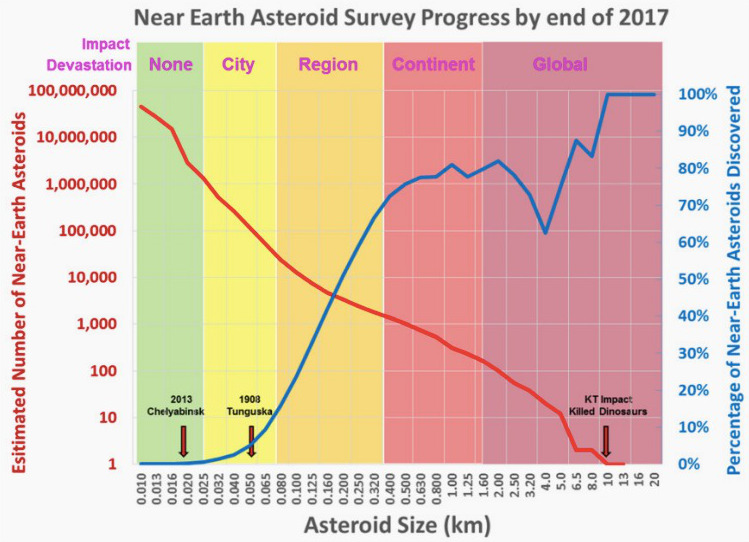Winston
Lorenzo von Matterhorn
- Joined
- Jan 31, 2009
- Messages
- 9,560
- Reaction score
- 1,748
NASA can’t find most of the asteroids threatening Earth, but it has a plan
https://qz.com/1310539/nasa-cant-find-most-asteroids-that-might-hit-earth/
NASA cites the 1908 airburst of a 40 to 60 meter asteroid over Tunguska, Russia, which leveled 2,000 square kilometers of forest. If that were to happen over New York City, it would cause millions of casualties.
NASA says it would be unlikely to detect an near-Earth object of this size with more than a few days of warning. That’s why the first big action item in this report is for NASA, the US Air Force and the National Science Foundation to come up with a plan to invest in new telescopes to hunt these asteroids.
The amount of funds available for Planetary Protection is increasing, with the Trump administration requesting $150 million from lawmakers next year, mostly to fund a mission to demonstrate a spacecraft called DART that could deflect an Earth-bound asteroid. But strangely, Johnson would not discuss specific technologies for hunting asteroids during the media briefing on the report.
One option is NEOCam, a proposed telescope that would hunt for asteroids. But that program may be under stress now that important questions are being raised about its predecessor project, called NEOWise. That effort used a different telescope to measure near-Earth objects, but Nathan Myhrvold, a former Microsoft technologist with a Ph.d in physics, has challenged the results, publishing a new peer-reviewed paper arguing that they are far more uncertain than NASA’s researchers suggest.
Johnson didn’t have much to say about the controversy when asked by a reporter, saying the NEOWise data “is extensively utilized by the overall scientific community as the best data available on the population of near-Earth asteroids as we know them.”
Double Asteroid Redirection Test (DART) Mission
https://www.nasa.gov/planetarydefense/dart

https://qz.com/1310539/nasa-cant-find-most-asteroids-that-might-hit-earth/
NASA cites the 1908 airburst of a 40 to 60 meter asteroid over Tunguska, Russia, which leveled 2,000 square kilometers of forest. If that were to happen over New York City, it would cause millions of casualties.
NASA says it would be unlikely to detect an near-Earth object of this size with more than a few days of warning. That’s why the first big action item in this report is for NASA, the US Air Force and the National Science Foundation to come up with a plan to invest in new telescopes to hunt these asteroids.
The amount of funds available for Planetary Protection is increasing, with the Trump administration requesting $150 million from lawmakers next year, mostly to fund a mission to demonstrate a spacecraft called DART that could deflect an Earth-bound asteroid. But strangely, Johnson would not discuss specific technologies for hunting asteroids during the media briefing on the report.
One option is NEOCam, a proposed telescope that would hunt for asteroids. But that program may be under stress now that important questions are being raised about its predecessor project, called NEOWise. That effort used a different telescope to measure near-Earth objects, but Nathan Myhrvold, a former Microsoft technologist with a Ph.d in physics, has challenged the results, publishing a new peer-reviewed paper arguing that they are far more uncertain than NASA’s researchers suggest.
Johnson didn’t have much to say about the controversy when asked by a reporter, saying the NEOWise data “is extensively utilized by the overall scientific community as the best data available on the population of near-Earth asteroids as we know them.”
Double Asteroid Redirection Test (DART) Mission
https://www.nasa.gov/planetarydefense/dart





